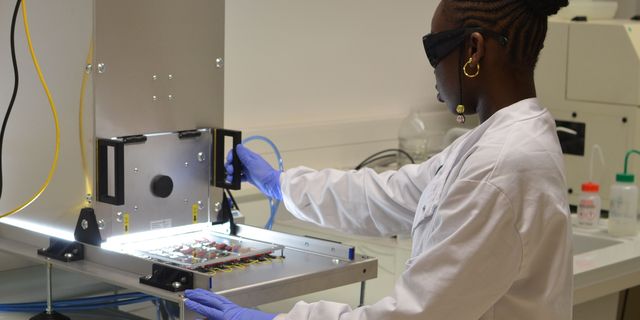More details in the attached file, on the left panel.
Subject:
Photovoltaic energy is considered the most useful natural energy source today. Different types
of solar technologies are currently available industrially, and research and development work to improve
their potential is ongoing. Today, silicon-based cells are the most commercially available and produce
high solar conversion efficiencies. However, expensive high temperature and high vacuum processes are
required to produce sufficiently pure silicon. Another photo-active material called perovskite has just
emerged in the solar energy community. It is currently attracting worldwide attention because of its
outstanding photovoltaic performance, high absorption properties and charge carrier mobility, as well as
its rather simple fabrication process. With production costs lower than those of silicon solar cells, yet
now capable of generating energy conversion efficiencies close to those of silicon solar cells, perovskite
solar cells are considered the future of photovoltaic technology.
In addition to their rapidly increasing efficiency, these cells are characterized by a great flexibility in
terms of both the choice of the deposition method and the architecture. This is the context of the
proposed PhD thesis. Indeed, one of the most important factors to optimize the performance of
perovskite-based solar cells is the quality of the active layer elaborated. Most of the properties of this
film such as its crystallinity, morphology and uniformity depend on the fabrication method used. Spin
coating is currently the most commonly used deposition method for perovskites. However, it only allows
deposition on small areas, requires some toxic additives to maintain the stability of the perovskite, as
well as working in an inert environment, which increases its cost. Therefore, there is a crucial need to
search for alternative deposition methods that are more environmentally friendly, with lower cost, and
applicable to large-scale production. In particular, an electrodeposition technique has recently been
explored in the LEPMI laboratory thanks to a first thesis. This technique has proven to be very promising:
it is inexpensive, forms smooth and uniform layers, can be applied for large-scale devices and, most
importantly, it is developed under ambient conditions and is environmentally friendly regarding solvent
engineering. Indeed, no toxic solvent is needed to stabilize or improve the morphology of the obtained
films. The main solvents used are demineralized water, ethanol and isopropanol. The subject of this new
thesis will now be to imagine the development of an electrodeposition strategy to address a major
concern regarding the toxicity of the perovskite material itself. The most common halogenated hybrid
perovskite for photovoltaic applications is CH3NH3PbI3, but it contains lead. The substitution of lead by
Sn, Ge, Bi, Sb, Cu or other potential candidates has never been explored by electrodeposition and would
be a very relevant objective to develop this innovative deposition process.
The choice of the perovskite formulation as well as the architecture of the device taken as a whole being
an inseparable combination to obtain good performances, both will be modified in concert in order to
maximize the efficiency of the realized solar cells. Furthermore, previously with other deposition
methods, the design of molecular architectures by cation or anion substitution, or even the use of
additives, has proven to be an effective strategy to further improve the optoelectronic properties of
perovskite allowing to optimize both performance and stability. Thus, a method of incorporating this
kind of additive could be imagined during the process of elaboration of novel perovskite materials by
electrodeposition.
Contact: Send your CV, a cover letter and your master reports to Lara PERRIN (lara.perrin@univ-smb.fr)
Thesis beginning : 01/10/2022
Closing date for application : 01/05/2022



